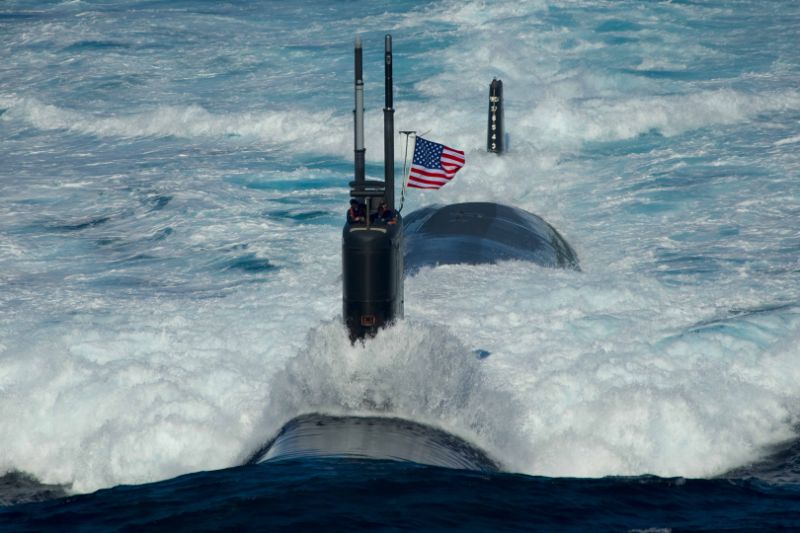

(Bloomberg Opinion) — As the West considers the threat posed by China’s naval ambitions, there is a natural tendency to place overarching attention on the South China Sea. This is understandable: Consolidating it would provide Beijing with a huge windfall of oil and natural gas, and a potential chokehold over up to 40 percent of the world’s shipping.
But this is only the most obvious manifestation of Chinese maritime strategy. Another key element, one that’s far harder to discern, is Beijing’s increasing influence in constructing and repairing the undersea cables that move virtually all the information on the internet. To understand the totality of China’s “Great Game” at sea, you have to look down to ocean floor.
While people tend think of satellites and cell towers as the heart of the internet, the most vital component is the 380 submerged cables that carry more than 95 percent of all data and voice traffic between the continents. They were built largely by the U.S. and its allies, ensuring that (from a Western perspective, at least) they were “cleanly” installed without built-in espionage capability available to our opponents. U.S. internet giants including Google, Facebook and Amazon are leasing or buying vast stretches of cables from the mostly private consortia of telecom operators that constructed them.
But now the Chinese conglomerate Huawei Technologies, the leading firm working to deliver 5G telephony networks globally, has gone to sea. Under its Huawei Marine Networks component, it is constructing or improving nearly 100 submarine cables around the world. Last year it completed a cable stretching nearly 4,000 miles from Brazil to Cameroon. (The cable is partly owned by China Unicorn, a state-controlled telecom operator.) Rivals claim that Chinese firms are able to lowball the bidding because they receive subsidies from Beijing.
Just as the experts are justifiably concerned about the inclusion of espionage “back doors” in Huawei’s 5G technology, Western intelligence professionals oppose the company’s engagement in the undersea version, which provides a much bigger bang for the buck because so much data rides on so few cables.
Naturally, Huawei denies any manipulation of the cable sets it is constructing, even though the U.S. and other nations say it is obligated by Chinese law to hand over network data to the government. The U.S. last year restricted federal agencies using from using its 5G equipment; Huawei responded with a lawsuit in federal court. Washington is pressuring its allies to follow its lead — the American ambassador to Germany warned that allowing Chinese companies into its 5G project would mean reduced security cooperation from the U.S. — but this is an uphill battle. Most nations and companies feel that better cell phone service is worth the security risks.
A similar dynamic is playing out underwater. How can the U.S. address the security of undersea cables? There is no way to stop Huawei from building them, or to keep private owners from contracting with Chinese firms on modernizing them, based purely on suspicions. Rather, the U.S. must use its cyber- and intelligence-gathering capability to gather hard evidence of back doors and other security risks. This will be challenging — the Chinese firms are technologically sophisticated and entwined with a virtual police state.
And back doors aren’t the only problem: Press reports indicate that U.S. and Chinese (and Russian) submarines may have the ability to “tap” the cables externally. (The U.S. government keeps such information tightly under wraps.) And the thousand or so ground-based landing stations will be spying targets as well.
Once Washington has real evidence of risks that it can share with allies, it can put the security of the Huawei underwater cable operations on the international agenda with the same vigor it has applied in addressing the 5G concerns. This evidence would be the backbone of a strong strategic communications effort to persuade friendly governments and Western companies that working with Chinese won’t pay off in the long term. To some extent this is already happening — last year Australia banned Huawei from involvement in a cable it is subsidizing that will connect it to the Solomon Islands.
The U.S. could also flex its technological muscles. Opportunities range from developing less costly alternatives in cooperation with the private sector that can pose price competition to the Chinese; innovating on means to test and protect the information on the cables Huawei Marine does eventually lay; and working to improve end-to-end encryption in all internet-based communications, which would make the task of compromising the security of the information on the cables much more difficult.
As U.S. Admiral Jamie Foggo, a career submariner, told me: “Underwater cables are part of our critical infrastructure and essential to the global economy. The U.S. must protect the integrity and security of them as surely as we provide international freedom of the high seas.” So while we certainly need to consider the challenges China poses on the surface of the South China Sea, we also need to look down to the murky depths of the bottom of the sea.
To contact the author of this story: James Stavridis at [email protected]
To contact the editor responsible for this story: Tobin Harshaw at [email protected]
This column does not necessarily reflect the opinion of the editorial board or Bloomberg LP and its owners.
James Stavridis is a Bloomberg Opinion columnist. He is a retired U.S. Navy admiral and former supreme allied commander of NATO, and dean emeritus of the Fletcher School of Law and Diplomacy at Tufts University. He is also an operating executive consultant at the Carlyle Group and chairs the board of counselors at McLarty Associates.
<p class="canvas-atom canvas-text Mb(1.0em) Mb(0)–sm Mt(0.8em)–sm" type="text" content="For more articles like this, please visit us at bloomberg.com/opinion” data-reactid=”41″>For more articles like this, please visit us at bloomberg.com/opinion
©2019 Bloomberg L.P.




